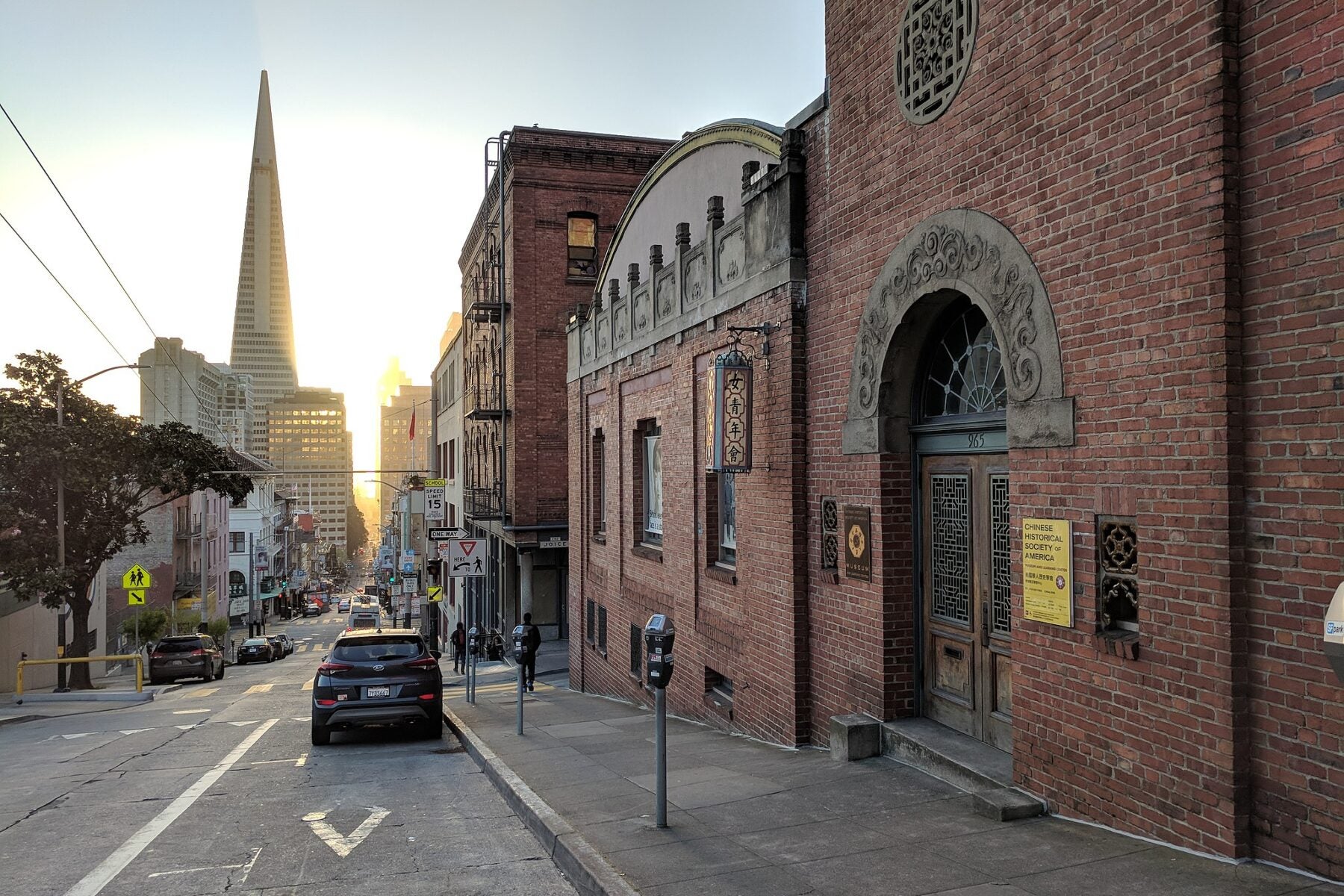The architecture of Julia Morgan is inseparable from the built environment of California. A prolific designer, she helped define what Californian architecture was and continues to be. More than 700 of her designs were built during her 46-year career as a licensed architect. Her best-known work, Hearst Castle, designed for the media mogul William Randolph Hearst Sr., exhibits the wealth that many have sought in the state, whether during the Gold Rush of the mid-1800s or in today’s Silicon Valley. Morgan’s designs for Mills College in Oakland helped create a specifically Californian architectural vocabulary for a college that needed to develop its own identity between the competing worlds of the University of California, Berkeley and Stanford University. But overall, Morgan’s career was shaped by a legacy of “firsts” and by her own understanding of how a woman architect needed to perform in a male-dominated field.
Growing up in Oakland, Morgan was one of the first women to graduate from the civil engineering program at the University of California. After encouragement from the architect Bernard Maybeck, she decided to leave the San Francisco Bay Area for Paris. There she became one of the first women to study and graduate from the prestigious architecture program at the École des Beaux-Arts—but not without a great deal of effort, as she didn’t easily pass the notorious entrance exam. As historian Karen McNeill explains, “Morgan failed the examinations three times, at least once for legitimate errors and once, she was told, because she was a woman.”

Upon returning to the San Francisco Bay Area for work, Morgan became the first licensed woman architect in California. In the following half century, she designed it all: churches, hotels, homes, museums, and more. And yet again, she became the first woman to be awarded the AIA Gold Medal by the American Institute of Architects, though this time posthumously, in 2014.
Today Morgan is celebrated as a groundbreaking architect who opened a pathway for other women to follow, but during her lifetime, she spoke and wrote little about her own work. Architectural historian Meredith L. Clausen notes that the few women architects practicing at the time weren’t encouraged to preserve or record their work. While white male architects were writing memoirs and creating public personae, architects who didn’t “fit the mold” were expected to downplay their differences. Clausen explains that, unlike men,
who were taught to be assertive and self-promotional, women were expected to be modest, self-effacing; as a result, many of them—including pioneers like Julia Morgan and Eileen Gray—made little effort to preserve their files or save their letters.
And even when women did chronicle their work, their archives weren’t awarded the same treatment as those of their male counterparts. When it came to pioneering women architects, “their presence [was] often erased, their tracks disguised, their papers destroyed.”
Any bit of criticism from their male peers or public could become reason enough as to why “they” shouldn’t be in the field of architecture. Consequently, our understanding of Morgan’s place in history depends almost entirely on the critical analysis of her buildings, not on her thoughts about them and her design processes.
A lasting legacy of Morgan’s career, then, is her completed work, particularly the buildings she designed for Progressive Era women’s organizations, which supported her throughout her career. The Young Women’s Christian Association (YWCA) was one of these. Morgan’s design for the YWCA in San Francisco’s Chinatown, founded in 1916, connects deeply to California history and shows the racial tensions in a state now celebrated for its acceptance.
Typically, women’s institutions of the time saw power automatically ceded to white women of status. “Elite white women dominate this particular story of the California women’s movement,” McNeill confirms. “By and large, they did not question the class and racial hierarchy in California or the nation…”
Get Our Weekly Digest
That paradigm didn’t last at the Chinatown YWCA, however. By the time Morgan was hired to design the organization’s new building, most of the board members and employees were Chinese American. They met with Morgan to develop a plan that would meet the unique needs of their community. In January 1929, they hired her to design an eight-story residence building as well as new buildings for the Japanese and Chinese YWCA associations.
Morgan’s design for the Chinatown YWCA mixes Euro-American architecture with traditional Chinese ornamentation, writes McNeill.
Though the entire building is designed in an Italian Renaissance style, the ground-floor Chinese wing opens onto a courtyard featuring windows with a Chinese cloud lift detail. Three Chinese-style towers overlook the courtyard, two of which belong to the Chinese YWCA building and the tallest of which occurs where the white and Chinese wings of the residence building meet. The courtyard’s south wall, which is part of the white members’ residence wing, features punched glazed tiles with Chinese motifs.
At the same time, “Morgan’s plan acknowledges that racism was by no means dead”—it was still necessary to include a moveable partition to separate the entrance for residences of the white YWCA members from the entrance used by its Chinese and Chinese American members. This compromise, McNeill argues, “underscores a dialectic, rather than sheer dominance or oppression, between hegemonic and minority cultures.”
Architects working in California weren’t always highly regarded within American architectural history, with Chicago and New York considered the major architectural centers. According to architectural historians Leland Roth and Amanda C. Roth Clark, architects working in the San Francisco Bay Area Tradition didn’t begin to receive equal recognition for their innovative work along the West Coast until the 1970s. Only belatedly was attention given to Morgan’s work, along with that of other architects who shaped California’s built environment, including Bernard Maybeck and A. Page Brown. But today Julia Morgan is a figure Californians know well, her name and legacy seemingly everywhere.
Editor’s Note: This article was edited to delete an extra word and change “her work” to “she” in the second sentence.







